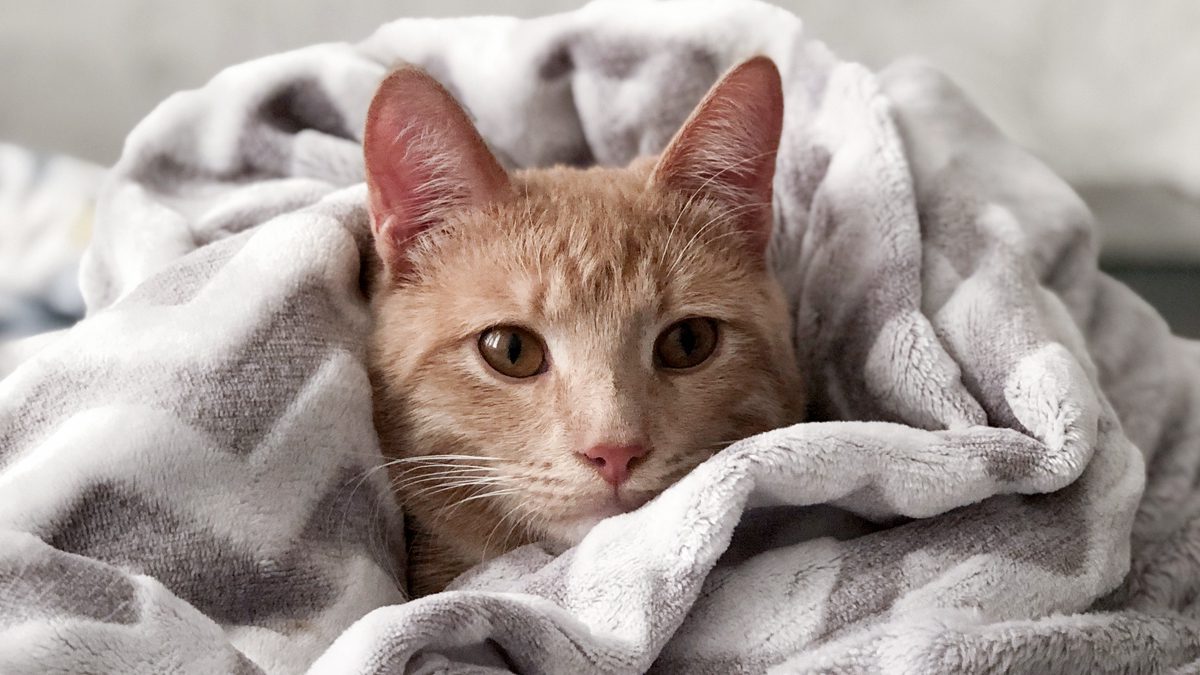
Is My Cat Freezing? Tips for Keeping Your Cat Warm in the Winter
Nov 7 2022.
Table of contents
Does my cat get cold?
When do cats freeze?
Whether or not a cat freezes depends largely on if they are primarily outdoor or indoor cats. A hardy outdoorsman would have a greater tolerance to cold than a person who spends the majority of their time indoors, and the same works for felines. Outdoor cats develop thicker coats over time to better protect themselves against the elements.
However, just because they are outdoors most of the time, this doesn’t mean your cat isn’t in danger of freezing in cold weather. Sleet, snow, and moisture can be dangerous for even the hardiest kitty. Cats don’t like water and hate being wet. In fact, their fur tends to absorb water which means it’s very important that they stay dry in freezing weather. Otherwise, your cat risks a cold, hypothermia, or even death.
A lot of people travel during the winter holiday season. As a cat sitter, you should always ask about your kitty client’s indoor and outdoor habits. Make sure you’re clear on how much time Mr Whiskers spends outdoors and know how to recognize a cold or freezing cat.
How do I know my cat is cold?
Your cat seeks heat
Cats love sleeping in warm places. Have you noticed your kitty spends a lot of time in front of the heater or fireplace? Do they burrow under blankets or against you? This could be a sign your cat is cold and seeking ways to warm up!
Cold extremities
A good way to see if your cat is cold is by checking his extremities. Do your kitty’s paws, ears, or the tip of their tail feel cold to the touch? This is another sign the cat could be freezing.
Freezing posture
You can identify if your cat is cold or freezing by taking a look at their posture. Is their fur fluffed up? Has your cat drawn their limbs in (usually under their body) or curled up into a tight ball? Are your kitty’s eyes closed? These are all signs your cat is working hard to stay warm.
How do I keep my cat warm?
It can be hard sometimes to know what your cat is thinking. A freezing cat can’t verbally communicate how they’re feeling, so it’s up to you to keep a sharp eye on your kitty’s behavior. You also need to ensure your cat has options for staying safe and warm during the winter months.
Install a cat flap
An outdoor cat should always have the option to retreat inside for warmth when they need to. Unless you want to spend all day opening and closing the door for your cat, installing a cat flap is the best approach. A cat flap gives your kitty the independence to go outside if they like, but to also come inside when it’s too cold for them.
Provide a cat shelter
Some cats might hate being indoors, or maybe aren’t allowed inside. If this is the case, make sure to provide an adequate outdoor shelter so your cat can stay warm in the winter. Cats love boxes, and they make excellent cold weather shelters. Place a box with a warm blanket in your garage or shed and make sure your kitty has easy access should they need it.
You can also build a shelter outdoors for your cat to use. Is your kitty an indoor cat? Don’t worry, building an outdoor shelter is still worthwhile. Your local stray cats will appreciate it during the cold wintertime.
Provide enough food
It’s normal for your kitty to plump up a little more in the winter than the summer. If you notice your cat’s appetite increasing as the weather gets colder, this is probably because they’re building up extra body fat. Make sure your kitty has easy access to plenty of food during the winter months.
Turn up your heat
It’s a good idea to keep the heat turned on during the winter, even when you’re not at home. After all, your furry friend is at home and a warm cat is a happy cat! Place blankets and baskets around the house so your kitty has plenty of places to cuddle up in. Even better, place Mr Whiskers’ bed near a radiator. They’ll stay toasty and warm even when you’re away.
Cat owners please leave your heating on as normal while you’re away, this will help your kitty and your cat sitter stay warm.
Electric blankets
Electric blankets are another option for helping your cat to stay warm in the winter. Many electric blankets have temperature controllers, and your kitty might enjoy sleeping on top of one. However, never leave an electric blanket on when you’re not at home. Also, never force your cat to use an electric blanket. Allow them to sniff and explore the blanket on their own and use it if they wish.
Now that you know how to recognize when your cat is cold, you’ll be able to keep your furry friend happy and warm this chilly winter season!
Want to learn more about caring for your cat? Check out our blog post on the 4 essentials of cat care!
- #cat behaviour
- #catinaflat
- #pet care
- Cat Care
